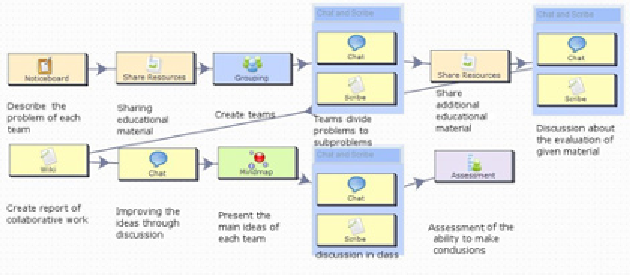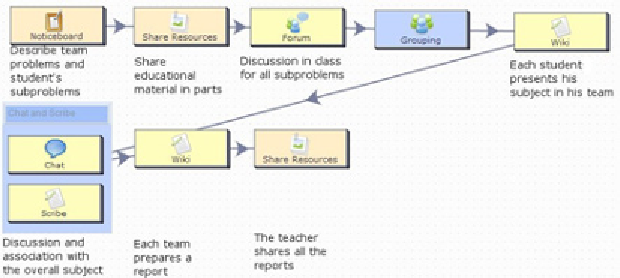Information Technology Reference
In-Depth Information
Figure 5. Implementation of the Group Investigation method as a design pattern within LAMS
A diagrammatic representation of this method
-as a design pattern within LAMS- is presented
in Figure 5.
2) Sharing of the educational material, 3) Each
student prepares his subject, discussing it in class
in order to collect more info, 4) Creation of groups,
5) Each student presents their report to their group,
6) Discussion of the connection of the sub-subject
to the whole, 7) Preparation of the team report, 8)
Presentation in class of group reports.
A diagrammatic representation of this method
-as a design pattern within LAMS- is presented
in Figure 6.
5.5. Co-Op, Co-Op Method
This method was proposed by Kagan (1985). It
belongs to the category of methods focusing on
the development of group consciousness inside
class (class building techniques). The learner
undertakes the responsibility to control what and
how he learns. There is a little interaction among
the teams.
Goals
: Similar to the previous structure. The
main aim is to cultivate the ability of students to
approach problems with different structures.
Process
: 1) Division of the problem into team
sub-problems, and later into student sub-problems,
5.6. Guided Reciprocal Peer
Questioning
The method of
Guided Reciprocal Questioning
guides learners how to assess their understand-
ing when studying (Palincsar, and Brown, 1984;
Martin & Blanc, 1984. This method is based on
Figure 6. Implementation of Co-op, Co-op as a design pattern within LAMS


Search WWH ::

Custom Search